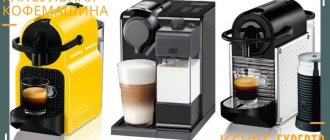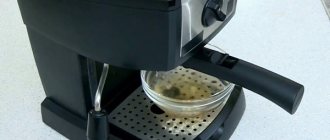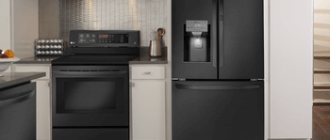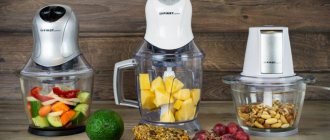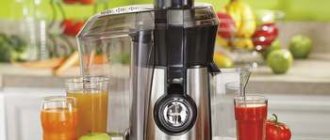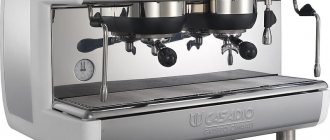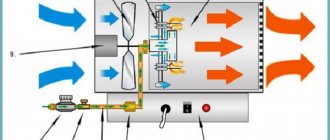Despite your love for natural and aromatic coffee, you don’t have enough time to make a Turk on the stove or on gas?
Worries will disappear when you prepare a drink using a coffee machine within minutes. They are multifunctional and easy to use. Add coffee powder and set the desired program. But these devices are highly valued. Therefore, purchasing requires detailed knowledge to make the right choice.
Prices
In short, a bean coffee machine is like a laser printer: expensive, but you can make the most budget-friendly coffee. A capsule coffee machine, in contrast to a “regular” coffee machine, is like a jet coffee machine: it’s cheap, but the capsules will more than make up for the cost of a grain coffee machine.
Capsule
Coffee makers are divided by type of capsule system and each is produced by several companies. Moreover, the shapes of capsules for systems almost always differ: a kind of “coffee slavery” forces you to choose not so much from the coffee makers themselves, but from the range of costs and flavors of capsules for them.
Taking all this into account, the range of prices for capsule devices is simply enormous, so the most obvious way is to go through the main systems.
- Nespresso. From 5000 to 45000 rub. for the car. And a lot - for original capsules (40-50 rubles/piece), which are sold only in original stores. But Nespresso is the record holder for alternative capsules. For example, the companies Cafe Royal, Julius Meinl, Coffesso, Oquendo, Porto Rosso, and the domestic “Moscow coffee shop on shares” sell them for 15-40 rubles.
- Dolce Gusto. 4000-20000 rub. coffee machine. Capsules cost 18-25 rubles, a drink with chocolate or milk costs up to 50 rubles. per cup.
- Tassimo. Perhaps the most affordable are 3000-9000 rubles. But capsules cost 25-35 rubles, milk “luxuries” cost twice as much.
- Cremesso. Rare, but worthwhile system. From 5,000 to 20,000 rubles, plus about 30 rubles. per serving of coffee.
- Caffitaly System. Prices range from 8,000 to 20,000 rubles, the company has its own line of Ecaffe capsules, 30-35 rubles each. The alternative ones are not much cheaper and, in fact, complement the tastes of the original ones; for example, Tchibo or Espresso Club.
- Bialetti. Perhaps the most notable ones are their design and quality; 10,000-20,000 rubles, at frequent promotions you can find a car for 5,000 rubles. Capsules only native ones - 18-32 rubles. a piece.
The cost of capsule-type household coffee makers starts from 3,000 rubles, and at sales it is even cheaper. For many, the low price is the main argument that a capsule coffee machine is better than a grain coffee machine. At the same time, the cost of some professional models easily reaches 100,000 rubles.
Cereals
They can also be simple and sophisticated - with a grain selector, functions such as self-shutdown, settings from a smartphone.
The average cost of a decently equipped unit is 40,000 rubles, the simplest – up to 10,000 rubles. A cup of coffee costs half as much as a capsule cup – about 10 rubles.
- Don't miss: What types of coffee machines are there and how they differ
Prices for top grain coffee machines from well-known manufacturers:
- Delonghi ECAM – RUR 45,000-140,000;
- Saeco – 40000-150000 rub.;
- Bosch – 50,000 p.;
- Philips – 40000-52000 p.;
- Melitta Caffeo Solo – 32000 rub.;
- Redmond – 10000 p.;
- Krups – 35000-40000 p.
In principle, among both capsule and grain coffee machines there are coffee machines for every budget; the main thing is to choose the most comfortable one.
Tips for care and use from the experts
To ensure that the purchased equipment does not break down for a long time, you must follow all the rules for its use, which are prescribed in the instructions from the manufacturer. But there are universal recommendations that are suitable for all types of coffee equipment.
- Read the instructions carefully before you start using the device. There is a possibility that there are some subtleties in using the technique you have chosen.
- Use only filtered water (many people recommend buying bottled water). This will prevent scale formation.
- Buy unflavored and matte varieties (for those with a grain machine).
- Clean the built-in filters and brewing units regularly.
- Once every 6 months, order equipment diagnostics from technical centers.
If it was not possible to avoid a breakdown, then contact the Unified Service Service “A-Iceberg”. Our specialists will arrive at a pre-agreed time and diagnose and repair the coffee machine quickly and efficiently. You can call a specialist at 8 (495) 228-31-78
, as well as leaving a request on the website.
Convenience
Perhaps the most “broad” criterion. The qualities and functions of different coffee machines simply cannot be counted.
Process
Beans are poured into a grain coffee machine, a capsule is placed into a capsule coffee machine, water is poured in, all that remains is to select a cooking program or press the start button.
Coffee beans can take longer to brew, up to 2 minutes, but you can adjust the strength of the coffee yourself. The capsule version is administered in 30-50 seconds, including complex drinks, but the strength depends on the fullness of the tablet and varies greatly among manufacturers.
The variety and availability of coffee beans is a big plus of grain coffee machines. But the capsule version is easier to use, including in terms of configuration, but also “poorer” in functions. The grain one, the more sophisticated it is, the more skills it requires from the owner, but it can perform a bunch of different tasks.
Size and material
Capsule machines are more compact and can be extremely miniature and shaped. Cereals are not suitable for a tiny kitchen or work table - dimensions such as an oven or a medium bedside table. Any coffee machine can be anything on the outside - metal, plastic or even wood, but on the inside - only metal, brass, otherwise a taste in the coffee cannot be avoided.
Care
Capsule ones are washed very rarely, and for most, this function is generally automatic. Repairs are cheaper, but due to scale they break more often. Grains need to be disassembled and parts washed every 7-10 servings. Their repairs are more expensive, but less frequent - they are more reliable.
Power
The higher the power, the faster the grinding and cooking process goes. Ideal for capsule - from 1200 W, for grain - up to 2000 W. The pressure in the pump for a grain coffee machine is at least 17 bar, for a capsule coffee machine - at least 15. The productivity of the former is higher, but it is a priori noisier due to the grinding of beans. The second, with rare exceptions, is almost silent.
Additional functions
Depending on the model, capsule or grain coffee machines can be equipped with:
- cappuccino maker for different types of coffee;
- two cups at the same time;
- regulation of the height of the tray (for pouring into different dishes);
- touch panel;
- recipe programs with memory;
- fault indicators;
- automatic loading of water through the water supply system;
- lighting, heating and more.
As a result, the bean coffee machine looks more solid, better built, but more complex (as a consequence, however). Capsule is simpler, and this is not always good. Fortunately, in both cases there are models equipped to the required level.
Carob coffee makers - for true connoisseurs
Carob coffee makers are also called espresso machines. Based on the principle of making coffee, they are similar to other types. Hot water under a certain pressure is passed through a layer of ground coffee beans. However, a carob coffee maker is much more difficult to operate, since most of the work in preparing the drink is done by a person. You need to pour the correct amount of ground coffee into the cone and compress the contents well. This, in turn, opens up the opportunity to experiment with the taste of the drink and try different types of coffee. This is why carob coffee makers can often be found in coffee shops.
Carob coffee makers with cappuccino maker from
De'Longhi
Many modern models are also equipped with a cappuccino maker for preparing other espresso-based drinks, such as cappuccino or latte. Such coffee makers are often equipped with many additional functions: adjusting the bowl feed, heating the drink, backlit indicators, an electronic sensor for controlling the water supply temperature, and so on, which affects the final price of the device. The material from which the carob coffee maker is made also affects the taste of the drink. Therefore, it is worth choosing a model based on the required set of settings and quality of materials.
Carob coffee maker Saeco Poemia
When choosing a carob coffee maker, it is worth considering the duration and complexity of the coffee preparation process. In addition, no matter how hard you try, you won’t be able to cook more than one or two cups at a time. Pump models produce higher quality coffee than steam or boiler models. Pressure affects the speed and quality of coffee preparation. 10 bar is considered optimal for home, 15 is ideal. The cone should preferably be made of metal, since plastic has a bad effect on the taste of the finished drink. In addition, plastic horns wear out quickly. The larger the diameter of the cone, the better the quality of the coffee. However, higher quality and larger filters will cost more. You need to make sure that the spout of the cappuccino maker does not dangle; it must be well secured.
Taste
The main advantage of coffee capsules is their tightness: they will retain the smell of freshly ground beans for 2 years. The grains, no matter how you protect the opened package, will fizzle out in a couple of months.
- Read more: How to store coffee beans after opening
But the grain machine is a real “barista’s machine”: you can adjust the volume, degree of grinding of beans, temperature and pressure, milk and foam for all types of coffee. Some models even make milkshakes.
For variety, you can combine types of coffee or sprinkle the beans with spices. In this regard, some simple cereal is better than the most complete capsule one.
The taste of coffee from capsule machines is a different story. Choosing a taste means choosing a manufacturer. For example:
- Dolce Gusto - 25 flavors, 13 of which are different types of coffee, 7 milk, 4 chocolate, tea latte with spices, cocoa. The downside is that there is only 6 g of coffee in an espresso capsule, instead of the standard 7-9 g, and instead of cream there is powdered milk.
- Nespresso – 26 flavors, 6 of them decaffeinated. 21 – classic espresso, 5 – lungo. Weight – 5 g, but the underweight is leveled out by selected raw materials. Cream is only available in models with a cappuccino maker; there is no tea or chocolate.
- Cremesso. 11 classic coffee flavors: espresso, decaffeinated, lungo, macchiato, 4 teas (black, with fruit, mint, herbs). Per serving 7 g.
- Tassimo. “Smart” machine - due to the reduced pressure of 3.3 bar, the coffee is not compressed, the taste is unusual. 14 coffee flavors, several of them with cream, plus teas and cocoa.
As for the choice between a capsule and a regular coffee machine, the first problem is only in relation to the manufacturer’s range. And the second disadvantage comes down to grain storage. Freshly ground, they are just as flavorful as the capsules.
Grain machine: description and principle of operation
A bean machine is a simple device for making coffee. To brew a delicious drink, you just need to add water, add grains and select a mode. The built-in coffee grinder will help you choose the degree of grinding, the intensity of the smell and the strength. There are coffee machines that can make cappuccino, boil or froth milk.
Principle of operation:
- coffee beans are ground and poured into a press;
- the water is heated to the set temperature;
- the finished drink is poured into a cup.
What's the result?
If you try, you can find both a bean and a capsule coffee machine that make the same claims. But not for everything, therefore:
- if you are a gourmet, a former/future barista, you drink a lot of coffee, you are too lazy to hunt for raw materials, but not to wash your car; you are not annoyed by the sound of a coffee grinder, and you have enough space, time and money to pay for quality, choose a bean coffee machine;
- if you don’t plan to get sophisticated with flavors, are not ready to do the washing and listen to the buzzing, and periodically “getting out” raw materials is fine; If you don’t want to deal with the functions or overpay for infrequent home coffee, your option is a capsule coffee machine.
